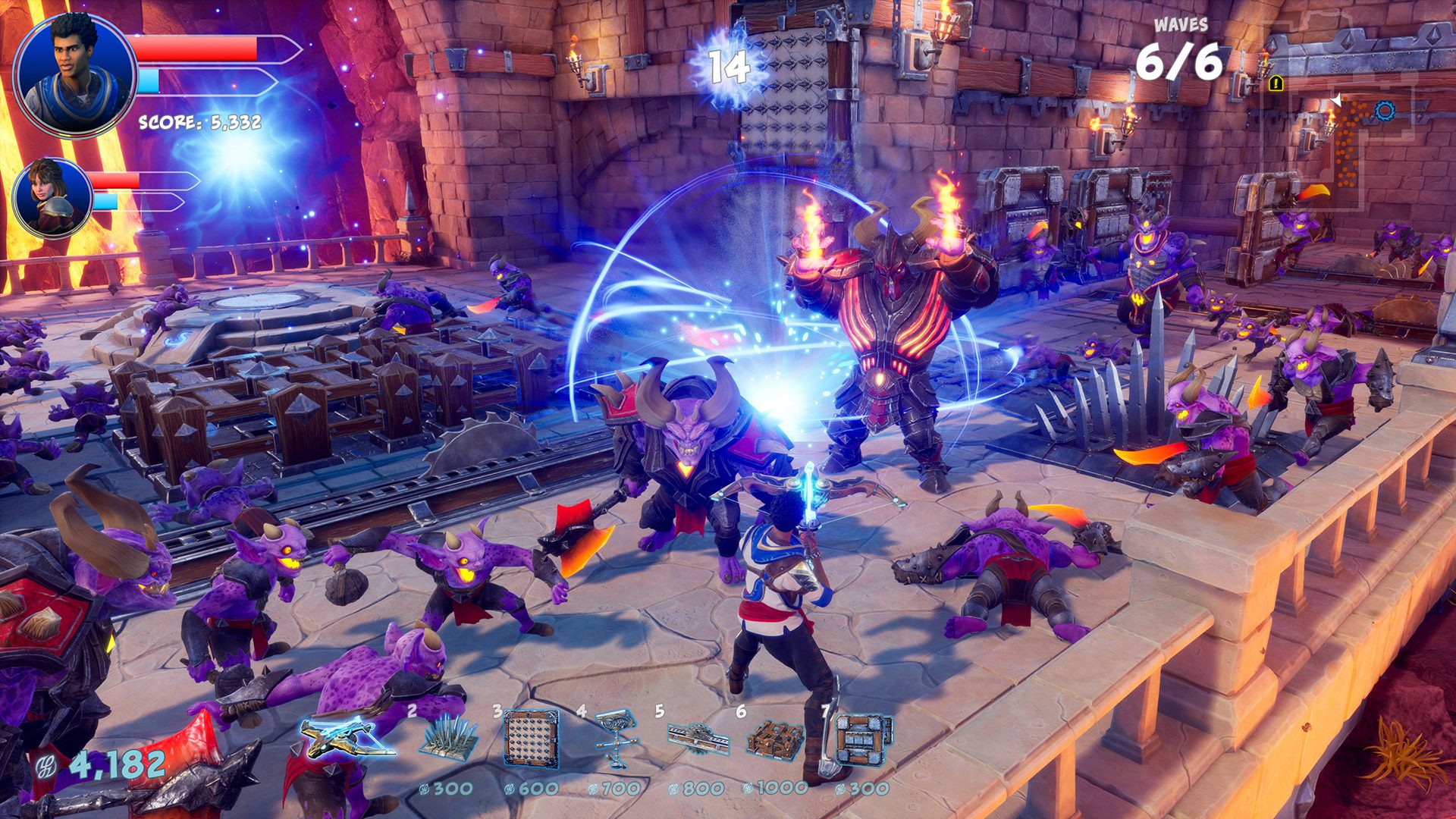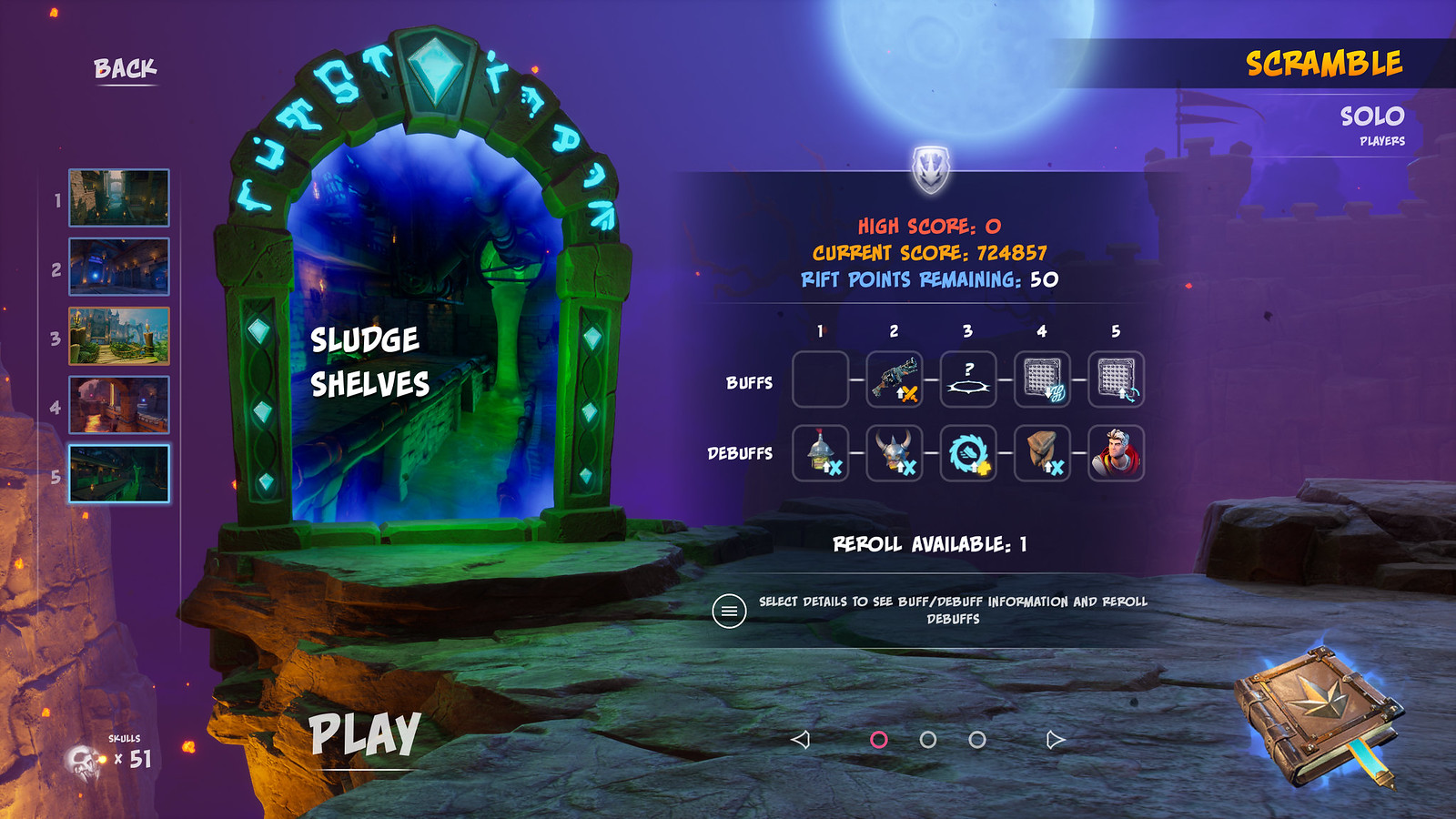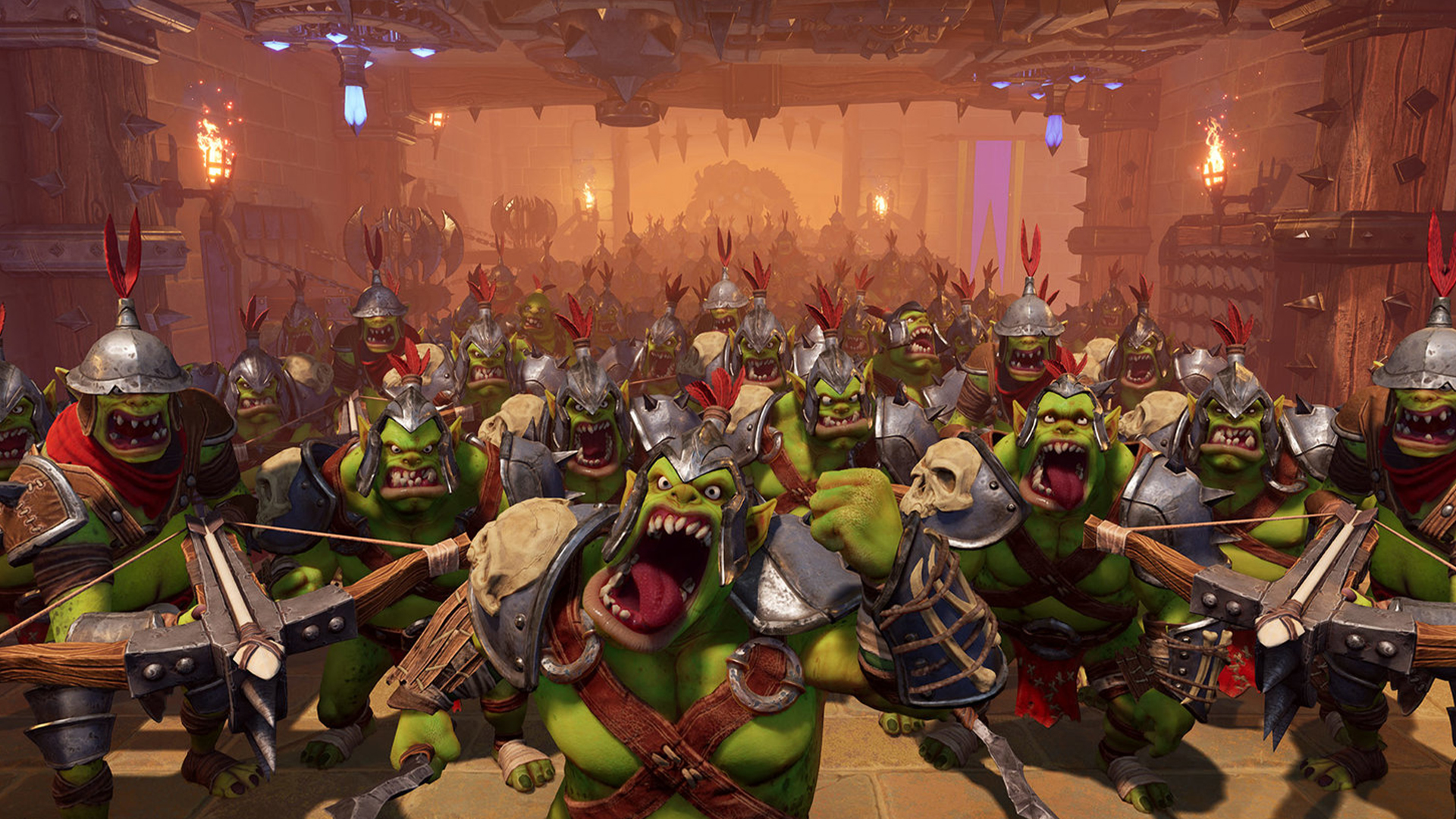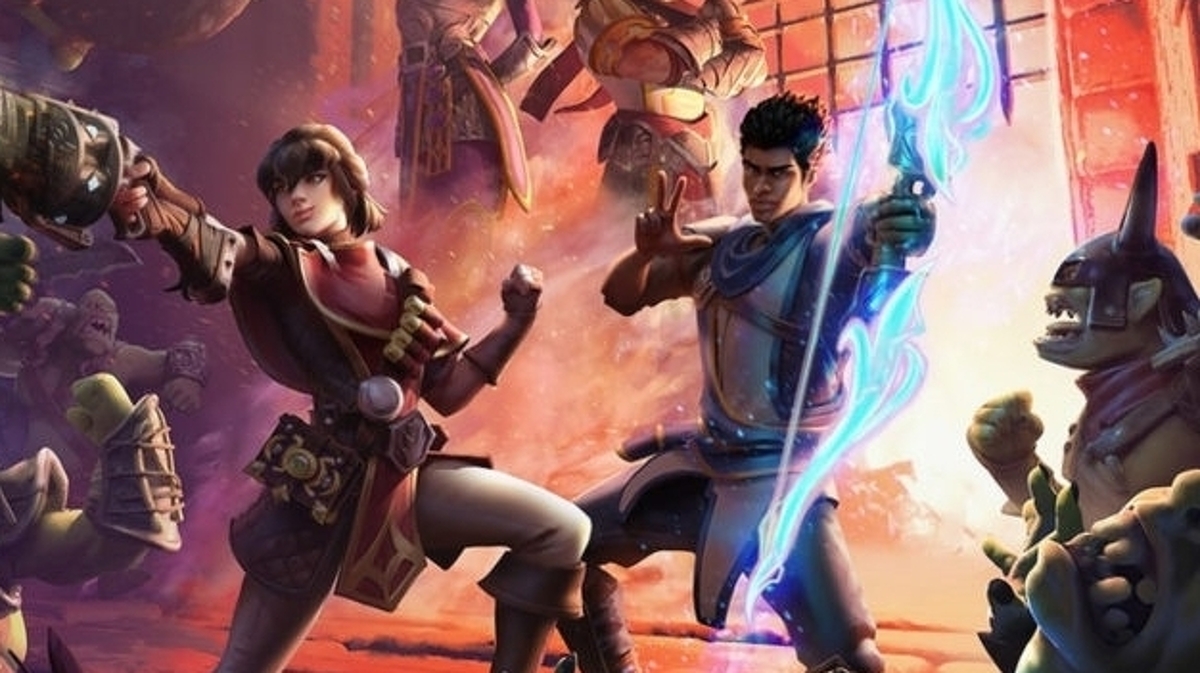Orcs Must Die! 3 (PS4) Review – An Orc’in Good Time
Released as a timed exclusive on Google Stadia last year, Orcs Must Die! 3 is a game that had fallen off the radar somewhat prior to its release. Now however, the orc’s time has arrived to grace the other consoles with its spin on strategic, cartoon slaying action. It’s been a long wait since Orcs Must Die! 1 and 2 released in 2011 and 2012 respectively. Luckily, it’s been a reprieve that was well worth it, with a crafty, deep and most importantly – fun – experience to be had.
I haven’t played the original games of the series but did have a bit of a gander in preparation for playing the third instalment. So, it’s worth noting that my perspective is based on being a fresh, baby-faced newcomer to the series. From what I can gather, more than a few gameplay elements carry over and are maintained in this entry, so a veteran’s experience may be a little different.
But enough with the history, what’s this new orc slaughtering extravaganza got up its sleeve to entice you to give it a go? Well, it offers a variety of modes, a significant chunk of content, a colourful art style and some devilishly fun mechanics to sink your teeth into. While not a perfect game, with some minor technical issues and barren narrative, it’s hard not to sing the praises of a game that throws literally hundreds of green buffoons at you and gives you the tools to wreak havoc on them at will.
The core concept of Orcs Must Die! 3 is straightforward enough. Orcs enter a level at one or more determined gates. Each level is intricately designed to enable your foes to reach a rift via a set pathway they’ll adhere to dutifully. Your job as a designated war mage is to, well, make all of said orcs die. Your rift has a ticker of the number of orcs it will stomach before you face defeat, so you gotta make sure to defeat them before they reach it.
So enters Orcs’ best mechanic – the use of various traps, allies, weapons, items and structures to prevent the hoard reaching its goal. Each level is akin to a puzzle, only this time the pieces are made up and arranged by you in whatever order you can come up with to make it complete. Initially, you’ll have access to a few standard floor and wall traps, before your arsenal expands to include allied defence units, ceiling traps and some more advanced options.

You have a limited number of coins at the start of a mission to purchase and lay down your traps of carnage, which you can then add to throughout the level with coins you earn from defeating orcs. The more orcs you kill in succession without a break, and through clever use of multiple traps to raise your combo meter, the more coins you’ll earn to purchase more and stronger traps. In this way, Orcs organically rewards you for getting creative and making efficient use of the map layout and space. Building the perfect killbox to funnel the bone-headed fools into your gauntlet of death is incredibly satisfying and the perfect kind of catharsis a game like this can achieve.
This is also where the skill ceiling for Orcs Must Die! 3 reveals itself. Throwing down traps next to the spawn doors seems the obvious choice when you first delve in. However, as the level complexity and difficulty increase, so too does the expectation placed on the player to problem-solve and make the best use of limited or restricted space for different traps. Some levels for example will have next to no ceiling space, forcing you to rely on wall or floor traps exclusively. Others may be exceptionally linear with little distance between the spawn and the rift, requiring you to effectively blockade and funnel the orcs or risk being overwhelmed.
The skill gap and difficulty curve aren’t especially smooth in this regard, as some levels are, to their credit, clearly designed to force you to adapt your playstyle, switch out your traps and remove your comfort setups. This has the dual impact of encouraging you to experiment with its huge variety of options, while also railroading your progress temporarily as you try to get your head around what’s being asked of you. Overall, it’s absolutely a great decision, as I found myself developing multiple ways to complete the levels which made me more versatile and had me creating some ingenious slaughterhouses. For some players though, it may cause some frustration as your progress is stalled.
After each level, you’re awarded skulls, which are used to purchase new items or traps and upgrade already acquired ones. There’s a mix of standard upgrades (e.g slower cooldown, increased damage, reduced cost to deploy) with unique upgrades. Each item has two unique upgrades you can purchase and select one from. For example, the ceiling lasers can be upgraded to have a higher number of lasers or alternatively do fire damage. The floor spikes can be electrified too, which has a comical animation effect on your enemies.

Acquiring skulls is based on performance for each level. 4 are awarded for how many rift points still remain at the end, with the 5th gained if you beat the mission within a par time. Additional skulls are rewarded for other bonuses, like picking them up from defeated enemies or having a perfect round. Every mode and mission awards skulls, so you’re always moving forward and progressing, which allows you to keep purchasing and experimenting. It’s a good system, well fleshed out and intrinsically reinforcing – the better you do, the more skulls you earn, so the more upgrades you can get and so on.
After over a dozen hours of playing and completing its various modes, I still had around 15 traps, items and equipment to unlock. There’s a huge amount here and I imagine there’s going to be some impressively clever strategies players will develop from the plethora of options available. You can also refund upgrades on an item to invest in other upgrades, giving you the ability to chop-and-change for each level, again encouraging you to freely explore the best means of success.
Other than setting traps, you’ll control your player avatar in a traditional 3rd person perspective. Initially, you’ll have the option of 2 characters, which expands further after completing the first campaign. Each character has their own special ability such as feigning death, double jumping or hovering in mid-air, further rounding out your options for builds. There’s a mix of weapons from an arcane bow to a machinegun-like crossbow, alongside a sceptre, staff, throwable acid bottles and amulets with elemental effects. If you’ve played Fortnite, the presentation will feel familiar as the camera, trap placement and shooting gameplay are exceptionally similar.
A further highlight while playing is the war scenarios. Every few levels, you’ll be presented with a much larger, open map where hordes of orcs are sent from all directions in massive numbers. It creates an absolutely epic sense of scale as you place banks of archers on walls, deploy towers as well as catapults and giant traps designed to eviscerate groups of foes. The notion of holding off an army of orcs is awesome and watching on as arrows fire all around and flaming rocks get blasted towards all manner of trolls and ogres is amazing. A couple of these scenarios are more challenging due to their design being more catered towards co-op rather than solo play however, and it felt slightly imbalanced unfairly because of this, but it was never insurmountable.
The variety of monsters you face increases the deeper into the game you get too, adding much needed variety and this necessitates different tactics. Standard small, medium and heavy orcs can be despatched relatively easily, even in larger numbers. Ogres and trolls can tank more damage while armoured variants are veritable powerhouses to be concentrated on. Then there are flying variants that can skip your floor-based traps, while fiends are resistant to fire damage and grolls ignore your traps altogether but only target you. Explosive enemies destroy your barricades and elementals divide into more but smaller enemies when defeated. It constantly keeps you on your toes, having to adjust your traps while never being overwhelming. They’re introduced gradually at a nice pace to keep up your interest through the surprisingly lengthy campaign.
Which brings me to those aforementioned modes. Orcs Must Die! 3 has a feast of game options. The initial campaign is comprised of 18 levels, some short and relatively quick, others massive and more enduring. Once completed, the second campaign of 5 more levels unlocks as well as additional playable characters. The campaigns are glorified level selects however, as the narrative holding them together is… limited, but more on that in a moment.
Aside from the two campaigns, there’s an interesting Scrambled mode where you have to progress through 5 tiers (read: levels) in succession. For each tier, you select from one of two maps, each of which has their own debuff which then applies for the rest of the campaign. You can have a couple of buffs too, and you can select one from 3 after each level. Endless mode is also present, with 10 maps to choose from where you simply survive as many waves as you possibly can before being overwhelmed. Additionally, weekly challenges are planned with unique requirements and provisions to test your ability to improvise with restricted options.

The modes are well appreciated and give some extra variety on top of the already complex mechanics. I very rarely spend too much time in these types of modes in other games when they’re clearly gimmicky and offer little more to the experience itself, but I found myself getting pretty invested and wanting to test myself. It’s good stuff. With leaderboards for every mode you may also find yourself competing to best your friend’s scores.
So what of that narrative mentioned before? Well, it’s present, but its effectively harmless and seems to exist to justify having the term “campaign”. There’s a couple of chuckle worthy moments, but it’s all very slapstick and mindless. Voice acting is fine and is hammed-up appropriately for the cartoonish feel of the game, though some lines repeated a bit too frequently when actually playing which became annoying. The handful of cutscenes are done well enough and are pretty short, so overall it’s non-invasive and fine. Credit to the developers for not having it outstay its welcome or detract from the central appeal of the game.
Aesthetically, Orcs has a colourful artstyle which is nice to look upon. Maps are varied and the war scenario castles are grand and intimidating to defend all at once. Enemies types are distinctive and clear which is surprisingly helpful in the chaos of hundreds of orcs marauding towards you. While not spectacular or striking, Orcs looks good and is easy on the eye, with trap effects and damage graphics particularly well done. It’s just nice to play a game which isn’t afraid to have some colour and fun with its graphics.
As a package then, there’s a lot to recommend with Orcs Must Die! 3. I didn’t have much of an expectation going into it, but I had a lot of fun. I’m excited to play a lot more of it, putting more time into the different modes, trying to 5 skull each level and experimenting with more insane loadouts (tornado spawning traps anyone?!). There’s 3 difficulties and even on normal some of the maps were challenging, so the prospect of attempting Rift Lord is both daunting and exciting all at once.
It wasn’t all sunshine and happy orc-killing however. A couple of the war scenarios were hellish to finish not because of gameplay or difficulty, but because the sheer scale and number of things happening at any one time was clearly too much for the game to cope with. Framerates would plummet, animations would become incredibly blocky and, probably worst of all, some traps and allied units wouldn’t activate due to the load it was under.

Framerate drops are bad enough alone, but when it directly impacts your ability to succeed through no fault of your own, it just ain’t great. It did give me a good laugh watching everything fall apart though and in the interest of fairness, the frankly mad amount of enemies that can be in a level at one time is ridiculous, so some technical problems weren’t wholly unexpected. On PS5 too this was much less of an issue.
The greatest part of this problem happened on the final level of the first campaign. Because of the huge number of things happening the game is accounting for, the framerate dropped to what felt like single digits. It was more like playing a series of screenshots than a flowing game. My inputs responded seconds later, orcs would only animate every couple of seconds and my archers simply stopped archering. It was hilarious and maddening all at once, as it meant I failed the mission on the final wave (which takes a good chunk of time…) about 3 times. It’s not totally game-breaking but it’s something to be aware of.
Despite all of that, Orcs Must Die! 3 was an unexpectedly awesome time. The variety of gameplay options, satisfying learning curve and rewarding progression system kept me wanting to dive into the next orc-slaying battle. It’s a game that’s designed to be furiously and chaotically fun, with a significant level of strategy that’ll take time to master. If you appreciate the tower-defence genre, you’ll have plenty to appreciate with this title.
Orcs Must Die! 3 is an intrinsically enjoyable and fun game. With deep mechanics, a wealth of content offerings, rewarding progression and impressive level of scale, it’ll delight those of the strategy and action background. It’s narrative is harmless and its technical capacity teeters under the weight of its ambition, but these do little to detract from the brilliant fun you’ll undoubtedly have playing it. Orcs Must Die! 3 is more than worth your time and will be a game I’ll be playing a lot more of.

Orcs Must Die! 3 is available now on PS4 (review platform), Xbox One, Xbox Series S | X, PC and Stadia.
Developer: Robot Entertainment
Publisher: Robot Entertainment
Disclaimer: In order to complete this review, we were provided with a promotional copy of the game. For our full review policy, please go here.
If you enjoyed this article or any more of our content, please consider our Patreon.
Make sure to follow Finger Guns on our social channels –Twitter, Facebook, Twitch, Spotify or Apple Podcasts – to keep up to date on our news, reviews and features.

